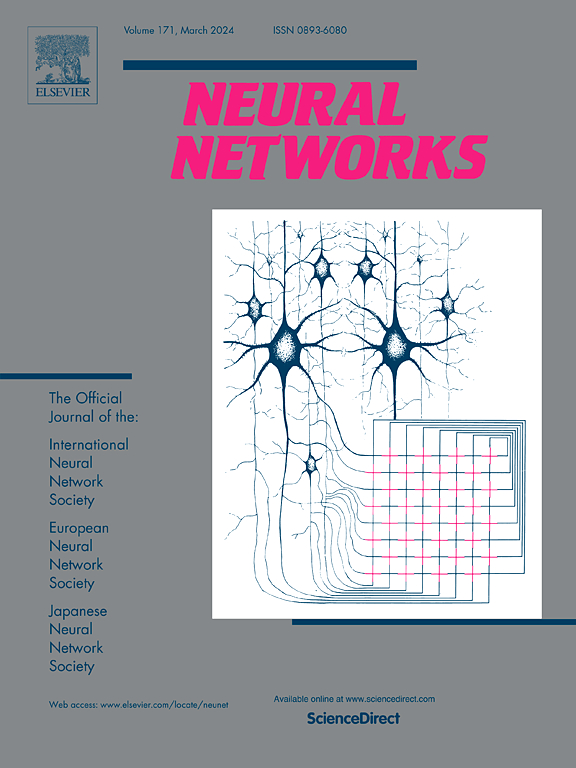Community-influencing path explanation for link prediction in heterogeneous graph neural network
IF 6
1区 计算机科学
Q1 COMPUTER SCIENCE, ARTIFICIAL INTELLIGENCE
引用次数: 0
Abstract
Most existing research on the interpretability of Graph Neural Networks (GNNs) for Link Prediction (LP) focuses on homogeneous graphs, with relatively few studies on heterogeneous graphs. Community is a crucial structure of a graph and can often improve LP performance. However, existing GNN explanation methods for heterogeneous LP rarely consider the impact of communities, leading to generated explanations that do not align with human understanding. To fill this gap, we consider community influence in GNN explanation for heterogeneous LP. We first demonstrate the effectiveness of communities in GNN explanations for heterogeneous LP through a preliminary analysis. Under this premise, we propose CI-Path, a Community-Influencing Path explanation for heterogeneous GNN-based LP that considers the influence of communities throughout the entire learning process. Specifically, we conduct degree centrality pruning and employ a community detection algorithm for data preprocessing. Then we propose a community-influencing objective, comprising community-influencing prediction loss and community-influencing path loss. Finally, we identify the reasonable explanatory paths that are the shortest with the minimum sum of node degrees and the fewest number of communities crossed. Extensive experiments on five heterogeneous datasets demonstrate the superior performance of CI-Path compared to baselines. Our code is available at https://github.com/wenyhsmile/CI-Path.
异构图神经网络链接预测的社区影响路径解释
现有关于图神经网络(GNNs)用于链路预测(LP)的可解释性的研究大多集中在同质图上,而对异构图的研究相对较少。社区是图的关键结构,通常可以提高LP的性能。然而,现有的异质性LP GNN解释方法很少考虑社区的影响,导致生成的解释与人类的理解不一致。为了填补这一空白,我们考虑了GNN对异质性LP的解释中的社区影响。我们首先通过初步分析证明了群落在GNN解释异质性LP中的有效性。在此前提下,我们提出了CI-Path,这是一种基于gnn的异质性LP的社区影响路径解释,它考虑了社区在整个学习过程中的影响。具体而言,我们进行度中心性剪枝,并采用社区检测算法进行数据预处理。然后提出了一个影响社区的目标,包括影响社区的预测损失和影响社区的路径损失。最后,我们确定了具有最小节点度和最少交叉群落数的最短合理解释路径。在5个异构数据集上的大量实验表明,与基线相比,CI-Path具有优越的性能。我们的代码可在https://github.com/wenyhsmile/CI-Path上获得。
本文章由计算机程序翻译,如有差异,请以英文原文为准。
求助全文
约1分钟内获得全文
求助全文
来源期刊

Neural Networks
工程技术-计算机:人工智能
CiteScore
13.90
自引率
7.70%
发文量
425
审稿时长
67 days
期刊介绍:
Neural Networks is a platform that aims to foster an international community of scholars and practitioners interested in neural networks, deep learning, and other approaches to artificial intelligence and machine learning. Our journal invites submissions covering various aspects of neural networks research, from computational neuroscience and cognitive modeling to mathematical analyses and engineering applications. By providing a forum for interdisciplinary discussions between biology and technology, we aim to encourage the development of biologically-inspired artificial intelligence.
 求助内容:
求助内容: 应助结果提醒方式:
应助结果提醒方式:


